#network post
Explore tagged Tumblr posts
Text

For those wondering - Amazing Spider-Man Vol 1 #338 (Hobgoblin sprays Spider-man with poison) and #339 (Doc Ock reveals the poison only becomes lethal when combined with cocaine).


#spider-man#doctor octopus#not the last time doc ock relies on a network of killer satellites#just remembered i had promised to make this post like half a year ago
24K notes
·
View notes
Text




"Hey, man, do you finally believe me about the sandwich? Seriously."
Leverage S04E12 The Office Job.
#leverage#alec hardison#aldis hodge#so according to the episode commentary this was supposed to be a post-credit scene#but there was a network policy forbidding post-credit scenes#so they had to put it where it is instead#ghostly'sgifs
2K notes
·
View notes
Text
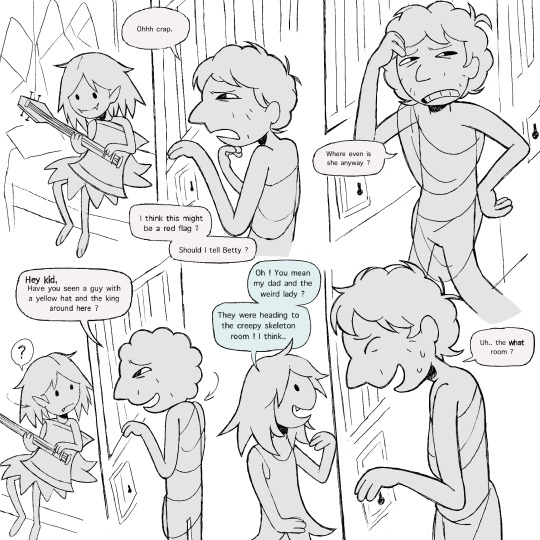
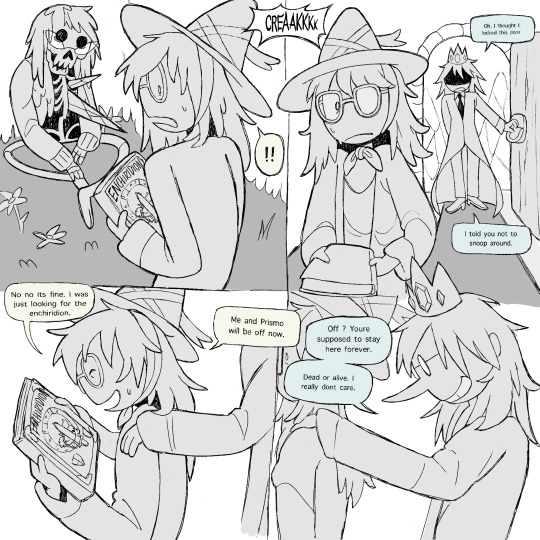


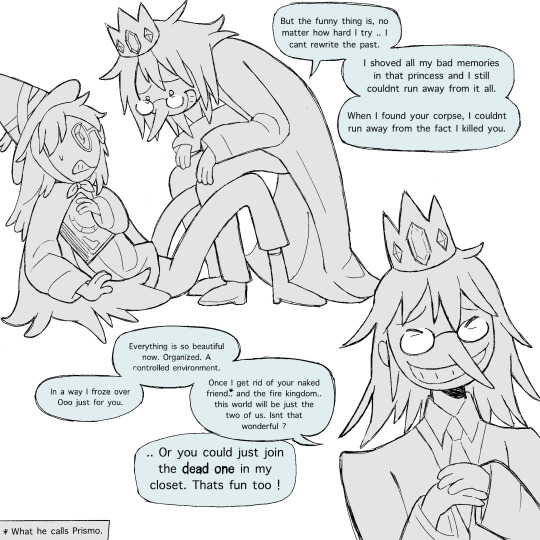


PT 3
Bonus page.
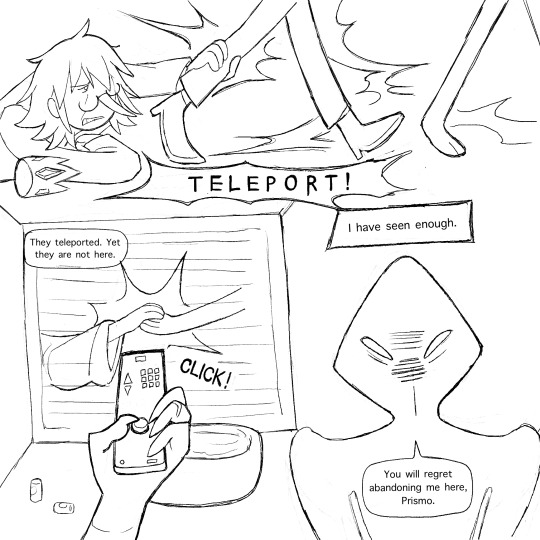
Yes, this is a different universe than canon WK. I will never let Betty catch a break. Happens after the events of the Vampire World. The fight scene was supposed to be longer But I am not drawing all that. Theres one last world left.
At some point there will be a master-post with the lore in order.
#Forbidden Dream AU#adventure time#fionna and cake#betty grof#au#petrigrof violence#dumb angst#winter king#simon petrikov#headcanon#prismo the wishmaster#petrigrof#human prismo#comic#long post#cartoon network#flame princess#candy queen#princess bubblegum
3K notes
·
View notes
Text
2000s Cartoon Network Halloween Bumpers
833 notes
·
View notes
Text

I’ve been so damn busy how will I thrive in these conditions.

#over the garden wall wirt#over the garden wall#over the garden wall Greg#otgw wirt#greg otgw#otgw fanart#otgw greg#otgw fandom#otgw 10th anniversary#fandom art work#fan art#shit post#meme redraw#wirt and greg#greg and wirt#cartoon#cartoon network#otgw frog#otgw#otgw beatrice#otgw enoch#otgw beast#I forgot mcgucket Monday#tumblr art#cartoons#cartoon fanart#autumn#fall vibes#different fandoms#cartoon network fanart
746 notes
·
View notes
Text
How to make a call script to talk about a bill
Alright, so if you're here you've probably seen those posts about "call your senator/rep/whomever about xyz" but then don't include a script. Here's a formula to making your own. Remember that you will likely to be talking to an aide, not the person themself, so you'll be using third person (he/she) rather than second person (you/your). Once you fill in the script for yourself on whatever your issue is, pass that new script around. Calling your representatives is a numbers game, not a uniqueness game, and a completed script helps with accessibility.
If you want to do this but need help, especially if you're trying to call a politician who usually doesn't align with you, feel free to send me (op) an ask and I'll lend a hand. It's a good skill to have, but it's not always intuitive if you've never done it before!
Option 1: The Basic I've never had this version take more than a minute, and since the bulk of calls are boiled down to a yea/nay without much regard for content outside of that, it does it's job.
Hi. I'm calling today from [place your person represents] as a constituent of [name of your person]. I heard about [bill number], or the [name of bill], and was calling to express my [support/concern] for it, as it would seriously [benefit/harm][name of your person]'s constituents in my community. Because of this, I'm calling on [him/her] to vote [yes/no] when the bill comes to a floor vote. (They'll say that they'll pass it along) Thank you, I appreciate that. Have a good day. *hang up*
Option 2: The Deluxe This one takes a little more effort, but can help your call stand out a bit, which helps indicate that you actually do care. Before you call, look on their website to see if they've supported any initiatives similar to the one you're calling about (even if it's kinda tangential). This works because most people call to complain, so saying "you're doing a good job" is a nice change of pace. They're people too, even if they're detached.
Hi. I'm calling today from [place your person represents] as a constituent of [name of your person]. I heard about [bill number], or the [name of bill], and was calling to express my [support/concern] for it, as it would seriously [benefit/harm][name of your person]'s constituents in my community by [main selling point of your bill/reason to vote it down]. As someone who expects my [office of person]s to look out for the people of [place your person represents], I was pleased to see [name of person] vote [for/against] the [name of bill] bill, showing their commitment to [main selling point of example bill/reason to vote it down]. To continue this trend, I'm calling on [him/her] to vote [yes/no] when the [name of bill] comes to a floor vote. (They'll say that they'll pass it along) Thank you, I appreciate that. Have a good day. *hang up*
#activism#call your reps#call your senators#community engagement#community networking#democracy#freedom of speech#hold elected officials accountable#this is the reason every “call your reps” post i reblog gets a new script attached#its easier for people to actually DO that when they have everything they need in front of them
446 notes
·
View notes
Text
Regular Show humanized because why not

#art#artwork#silly stuff#regular show#eileen regular show#mordecai regular show#regular show rigby#mordecai and rigby#cartoon network#sorry for not posting for like a month
1K notes
·
View notes
Text

You will be avenged...
#steven universe#Stars align#the owl house#Toh#Yuri on ice#Yoi#queer animation#I'LL NEVER FORGIVE YOU BIG CORPORATIONS#mappa#Cartoon network#Disney#YOU ALL WILL NOT BE REMEBERED FOR THY GOOD DEEDS FOR THIS#SNAL POSTING#😡
569 notes
·
View notes
Text
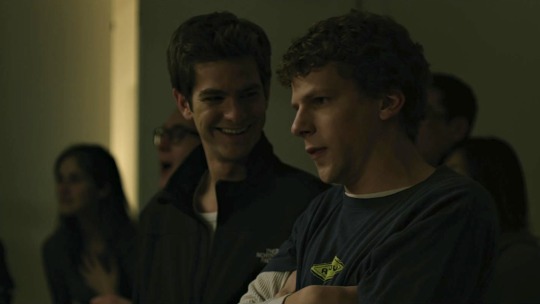


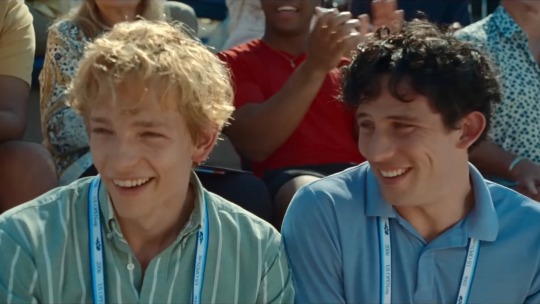
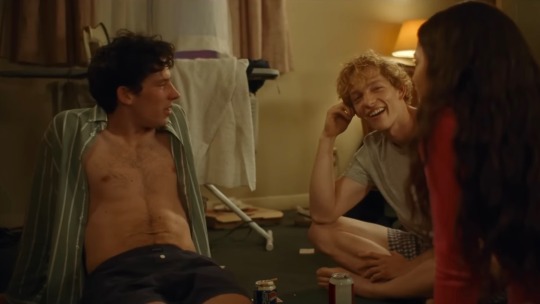

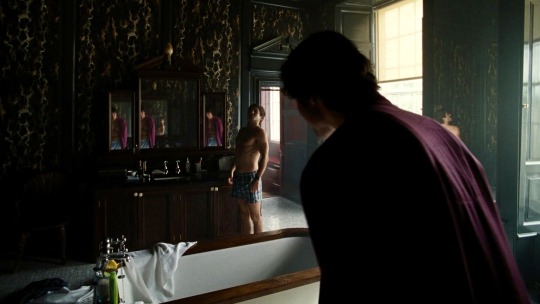

little beast, richard siken + the social network (2010) dir david fincher // challengers (2024) dir luca guadagnino // saltburn (2023) dir emerald fennell
#want to make a little beast post for challengers with more caps when it drops#maybe even one for each part 🧍🏻#…#but made this in the meantime#+ tashi ofc#challengers#challengers 2024#challengers movie#challengersedit#tsnedit#the social network#tsn#saltburn#saltburn 2023#saltburnedit#art x patrick#patrick zweig#oliver x felix#cattonquick#felix x oliver#markwardo#*#comparatives#web weaving#richard siken
883 notes
·
View notes
Photo






#kny-network#knyedit#knysource#allanimanga#dailyanimanga#fyanimegifs#fyeahanimegifs#anisource#shounenedit#kimetsu no yaiba#demon slayer#posted
1K notes
·
View notes
Note
Is there a good post outlining all the evidence against Gaiman? I know the podcast has it and that's what people pointed to me, but considering it has been days I was wondering if someone had gathered it all into seperate post so one does not have to listen to someone advertising their work every few minutes in order to listen to the important parts.
Belatedly (given that at least three other women have accused him since my post), there are some. The best of the original ones is probably "Manufacturing Consent" by Annabel Ross, but there are also transcriptions of the original accusations that, iirc, weed out some of the editorializing and focus on the raw material (which is, just be warned, very raw).
This (long) thread provides the important links in terms of the accusations conveyed by Tortoise, I think (a more to-the-point list is here at muccamukk's Dreamwidth account). I included the long thread because I'm in strong agreement with the final person in the chain that, Tortoise's many failings notwithstanding, they provided enough evidence for the SF/F community to judge and respond more appropriately than with a collective blanket of silence punctuated by occasional cavalier or desperate dismissals of the accusers, before the other accusations broke.
In all honesty, I'm pretty appalled by the idea that, well, now there's enough to start talking about it with a modicum of decency and respect but wasn't before, because apparently it was okay to use trans people (who had nothing to do with any of this) to justify defending a cis guy beloved of fandom from very thorough rape accusations.
I particularly feel this way about the parts of the community dedicated to publicizing news and major ongoing discussions that simply said and did nothing. Scalzi's "I'm horrified, might take awhile to process, here's a link to RAINN" personal statement was fine (Vernon's wasn't), and I don't think every random author was obligated to make their own statement as such. But spaces that exist specifically for covering ongoing discussions and news in the SF/F community not saying anything at all—even that the allegations existed—was far worse and really disheartening. So I wanted to link to a discussion that acknowledges how very few people lived up to their stated principles when there was solid evidence against an influential, popular man in their own circles who knows the right catchphrases and terminology.
I was particularly unimpressed with Mike Glyer's handling of discussion at File 770 and, as far as I could tell, Tor only acknowledging the whole thing on their German-language site. The German article seems to be very good, but ... they're based in NYC and Gaiman is an English-language writer, why was their only commentary for weeks shunted away from the English site? US law should absolutely cover acknowledging the existence of the accusations.
There was, let's say, a lot of disappointment to go around, so I'm also grateful for the other women who kept the ball rolling, awful as it is that they a) had similar experiences and b) had to reveal those to get the whole thing taken seriously.
#anon replies#cw rape#long post#respuestas#anghraine rants#cw neil gaiman#i've actually been in fairly close quarters with him before - nothing happened but the fact that /i/ didn't get the whisper network warning#makes it pretty clear to me that it wasn't nearly as widespread as some have suggested; i keep up with a lot of sf/f chatter and always hav#really unimpressed with a lot of people i previously thought well of#and honestly i'm more on team 'give women a truly fair hearing' than 'believe women uncritically'#but scarlett and k did not get a fair hearing from this community and the leveraging of uk media transphobia to shield him?#absolutely rage inducing
452 notes
·
View notes
Text
On average, what is the total MONTHLY amount that you spend on dining out*?
*(This doesn't only count going out to restaurants, but also stuff like picking up fast food to bring home, getting a coffee on the way to work, getting a premade sandwich from a grocery store deli during lunch, buying a quick snack from a convenience store or food cart whilst walking somewhere, ordering a pizza or any other food to be delivered to your home, etc.)
*(If you often dine out in groups/as a household: calculate and divide the costs so that you get a Per Person average. This is for YOU individually, NOT the total household/group costs)
(I'm sure polls similar to this have been made before (very common topic), I just haven't personally seen one that I can remember, so, I was curious to do my own! I was discussing this with a group of people today and it was very interesting to see how widely the number varied between individuals. :0c )
(Reblog for bigger sample size if you can, and feel free to explain your answer in tags if there's anything extra to add!)
#polls#tumblr polls#I'm mostly in the 0/1 - 25$ category. Maybe the rare month is a bit over $25 if there's something specific going on like birthday.#Which I'm NEVER eating in an actual restaurant (erm... covid... plus I just hate restaurant environments. i would rather pickup#the food and bring it home to a peaceful quiet environment that I control lol). But more typically like stopping by a grocery store deli#section or something. I don't have coffee that much. And I can't eat fast food much due to my health issues/diet restriction stuff#so if I'm out like coming back from an appointment and I start feeling really sick and weak. I know that a hamburger will just#blow up my system and cause nausea or something. So I try to pick the breadiest most#neutral looking turkey sandwich at the safeway deli to eat during the hour ride home or whatever lol#I actually kind of wish I could do stuff like get food more often vecause it would take the burden of cooking everything off of me#but.. alas... Money... and Health Things... T o T#I still wouldn't do it ALL the time but like... once a week instead of once a month or something.. or maybe turning into a coffee#person.. I do love drinks A LOT .. i am a drink person who will have 5 different drinks sipping on at all times#But i just have to make them all myself mostly lol#And I cant really have too much coffee since it will make me sick. so like.. teas and juice mostly#When I inevitably become a millionaire by never using social media never networking and only finishing one#sculpture every 5 months which I dont even post about or sell - then I shall... get more drinks..#I will somehow wean my body onto coffee and drink one a day solely for the ritual of it#Though even then... I would still probably just like.. buy the mateirals to make it at home or something#Like if you had a million dollars you could just buy a kitchen grade ice cream machine and other stuff to make your own milkshakes and#coffees and smoothies and bubble teas. Genuinely I think even if I were a BILLIONAIRE I would still look at playing likr $8 for a single#coffee and go .. uh.... I could just buy the equipment to make this and then save that money. PLUS. its in my house now so no need to#have to leave. I can make my own drinks in the comfort of home. .. ideal..#Like no matter how rich I ever got I would still have the lingering scroogey stinginess. like i am NOT paying for that. I will jus#make it myself. Especially if it was an Everyday thing. Anythign thats part of my routine I try to optimize and make as efficient as#possible... ANYWAY.. In an IDEAL world I would get treats. but probably not that much. as on a daily basis it would start to get#to me and I would just save up to buy kitchen machinery if I was rich lol
318 notes
·
View notes
Text
How can people watch a piece of media and not immediately try to look at it through the lense of homosexuality and forbidden desires…. How….. It must be so boring, watching a movie and seeing two main characters hit it off but theyre not canonically in love so you dont think anything of it…. Very foreign to me, i dont understand it at all…
#first tag bout to hit some of yall like a brick#markwardo#tsn#the social network#marvey#suits tv#jackieshauna#yellowjackets#theres more i just cant think rn#text post
914 notes
·
View notes
Text
Amnesia fox and ice grandpa go on an adventure.



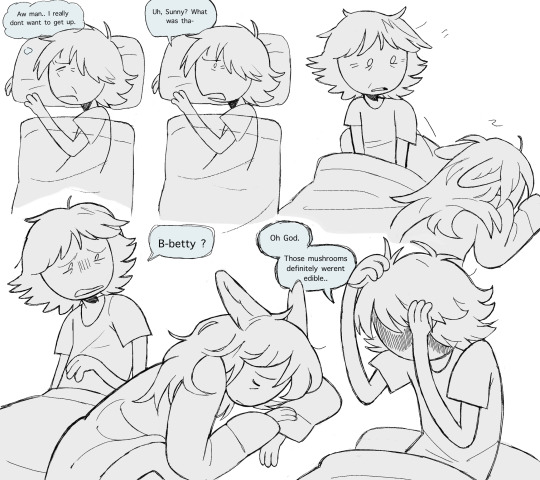
Next morning.
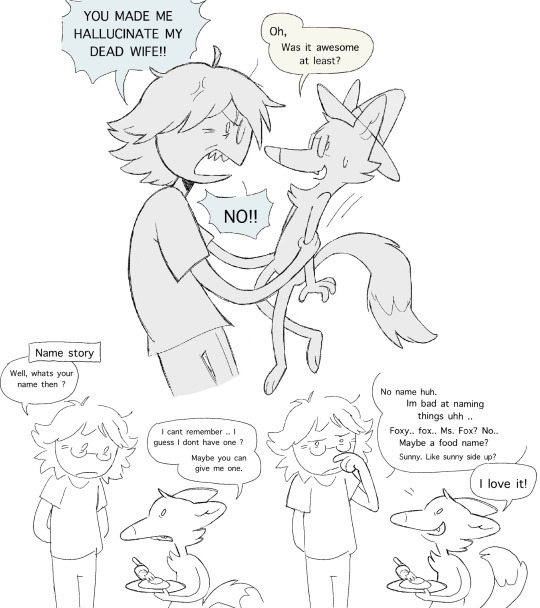
Bonus page:
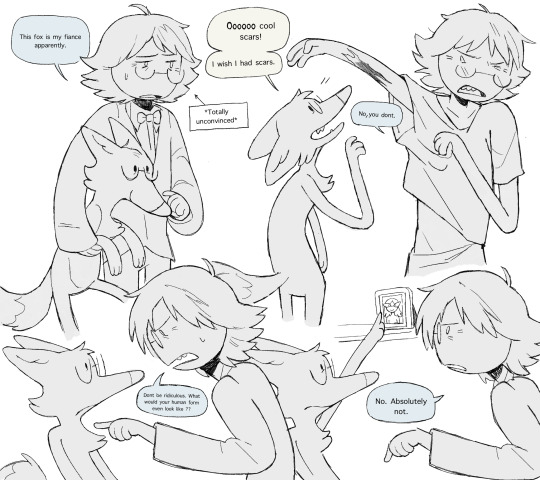
#petrigrof#forbidden dream au#fionna and cake#adventure time#simon petrikov#betty grof#fanart#au#headcanon#post f&c#cartoon network#comic
1K notes
·
View notes
Text

The god Od depicted in a symbolic representation of the word's creation as a docile bull awaiting sacrifice at the altar.
It carries the foundations of the world in its horns (via a very old cross and wheel motif representing cyclical totality, now mostly used as a visual shorthand for the world). It has three sets of horns in the form of the lunar crown, a mostly obsolete symbol of Wardi royalty. The altar is decked with an orange lily motif, after a hardy native water lily capable of regrowth in waters that dry seasonally. This symbol of rebirth and fertility in a sacrificial scene evokes the sacrifice-rebirth cycle initiated by Od's primordial slaying, which is fundamental to the world's functioning.
This is a rundown on interpretations of the god Od, a deity that has a long history in the lands surrounding the Mouth of the eastern inner seaway, and the impact (or lack thereof) of its primordial sacrificial nature in religious practice.
The god Od appears in religious practices throughout the region, having the utmost significance to the Imperial Wardi faith and lesser or separate significance elsewhere. The five religious practices wherein variants of Od has longstanding historical significance are the Burri Faith, the (Imperial) Wardi faith, the Old or 'Heathen' Wardi faith, the faiths of the Hill Tribes, and the Wogan faith.
—
The name Od and most significant elements of this god have origins in the Burri faith, which was transferred across the sea to the Wardi, Wogan, and Hill Tribes in the time of its second and third empire.
The Burri Od is described as having been the first being. The universe began as a cosmic sea and empty, eternal sky, loosely representative of a primordial and fundamental female and male dualism. Od appeared at their borders as a result of their interfacing, in the form of a giant aurochs or bison whose hooves touched the seafloor and horns touched the sky. He dipped his head down to the silt and lifted it out of the sea in his horns, thus forming the foundations of the world. His semen spilled into the cosmic sea and created the first seven gods, who then killed and divided their father, giving the world its form with his body.
While significant to the creation story, Od is of relatively little importance in everyday practice of the Burri faith and is not commonly worshiped (rather his seven children are, as they were the original and most powerful group of gods and created life).
Though the Burri Od takes on a sacrificial role in creation, animal sacrifice is not central to the Burri faith and is only performed in specific contexts (some festivals and holidays, in times of great strife, and to a few specific gods within a wide pantheon). The Burri faith does not involve a sacrifice-rebirth cycle as foundational to the world's functioning and god's health, and offerings are instead mostly gifts to please and rightly venerate the gods (or avert the malice of less savory deities). Offerings of food, drink, and precious materials are preferred by most gods. When animal sacrifice does occur, bulls ARE generally favored, as a reflection of their primordial counterpart.
—
The modern/Imperial Wardi Od is partly an import of the Burri tradition, which fused with both native monotheistic/animist worldviews and animal cults during the reign of the 2nd Burri Empire and developed into a new faith, which has presently become the state religion of the Wardi Empire.
‘Od’ in the Imperial Wardi context is best translated as capital G ‘God’ (anyone saying 'God' is, in-universe, saying the word 'Od'). Its creation of the world plays out in a very similar fashion, but the first human life (rather than other gods) is created by Its semen mingling with the cosmic sea. It willingly sacrificed Its body at the hands of the first people, who formed the world with its remains. Its shed blood spattered the earth and can be found today as meteoric iron, and animal life emerged from the mingling of the blood and the soil. Its death initiated the eternal cycle of sacrifice/death and rebirth, with each begetting the other and necessary for the world to function.
Od's body is dead and the world is Its corpse, but Its spirit survives in seven 'faces' which govern specific functions of reality and society. The connection of Its spirit to Its body is maintained by right practice, right prayer, and right sacrifice (in the form of food/drink offerings, bloodletting, common sacrifices of animals and occasional sacrifices of people).
The Imperial Wardi Od is generally regarded as genderless and dual-sexed, and referred to with a unique deified pronoun most effectively translated as capital I 'It'. Its sex is of relatively little significance to everyday religious practice, and discussions of Its dualism are more likely to occur in scholarly and philosophical contexts (like debates on the minutia of how Its semen, milk, and menstrual blood are all mentioned in old accounts of creation, and how the implications of this should translate to body politics and taboo).
—
The Old Wardi or ‘Heathen’ Wardi faith is a separate branch of old ethnic Wardi religion with significantly less Burri influence. This is a minority practice that only survives intact in isolation. Its practitioners are often hostile to all foreign influence and the Imperial Wardi faith, and suffer minority status and religious suppression.
Its version of Od is a more intact surviving remnant of ancient Wardi monotheism, as an androgynous creator god who lost physical form in the act of creation, and lives on as innumerable spirit aspects of its whole. This deity is referred to as Od in describing its primordial form, but is mostly referred to as a unique word for spirit, which is 'the Koya'. Practitioners of the old faith often identify the seven-faced Od as a twisted, foreign misinterpretation of the Koya.
This practice is somewhat animistic in nature and involves veneration of individual spirits that form a larger whole. Every aspect of the world has a spirit (plants, animals, minerals, bodies of water, etc) that exist in an ideal balance and as strands of an interconnected death-rebirth cycle. Each spirit is referred to as 'the [noun]-koya'. All discrete forms of life/matter have at least one attached Koya, while living beings also have a soul (which is separate from the Koya and reincarnated upon death).
Each Koya exists as a quintessential essence (ex: the lion-koya, the maize-koya, the iron-koya, the salt-koya) rather than separate individual objects having separate individual Koya, though unique landmarks do have their own (the Brilla River-koya is separate from the Yellowtail River-koya, though both share the freshwater-koya). Each individual may have multiple spirits (geese have the goose-koya, but also the bird-koya, the freshwater-koya, etc), a system that categorizes the world by intrinsic natures and precisely dictates how each physical body has unique metaphysical significance.
Animal sacrifice plays a somewhat similar role in Old Wardi religion to Imperial Wardi religion in the sense that it intends to maintain the stability and oneness of the divine spirit and a death-rebirth cycle. In this case, in freeing part of the spirit, balance can be brought to the Koya totality and restore the death-rebirth cycle. (Ex- in times of drought, the sacrificial release of the migratory goose-koya can encourage the return of the rains). This is far from the only way to re-balance the Koya. The most significant rites come in the form of songs that summon, release, or expel individual Koya as needed.
—
The Od of the Hill Tribes is a mingling of the Burri/Wardi Od and a much older goddess of fertility and agriculture, and is strongly associated with cattle and barley. This version of Od did not create the world and is only one of many gods, though she is said to have been born from the sea and carried up fertile soils with her (which is likely a direct result of Burri/Wardi influence). A few tribes venerate Od as a chief or patron god, though none are fully monotheistic (outside of converts on individual or clan levels).
She has a distant common ancestor with the Finn goddess Morgren (as the various Hill Tribes are descendants of a single proto-Finn population who migrated across the Viper seaway in prehistory), who is also a goddess of agriculture associated with fertility and barley (though in Morgren’s case, she is THE god of the staple crop barley and lacks the cattle association, and has no direct influence from the Burri/Wardi Od whatsoever)
Most of the tribes of Greathill do not practice animal sacrifice but offer grain and fruit to Od, and create a sanctified mix of crushed barley and oil that is anointed on livestock and people to confer Od's blessings of fertility. In some cases, the dominant cow in each herd is considered to belong to Od and will not be milked or slaughtered, and is buried with full rites upon its death.
—
The Od of the Wogan religion is distant to the rest of her counterparts, though has absorbed some Burri and modern Wardi elements over time and is referred to by the same name (a definite foreign import). She shares the fertility aspect ubiquitous to other Od variants, and is occasionally depicted as a cow.
She is a goddess of the earth and sea, who was wed to Iapedi, the god of the sky. The ocean is functionally her womb (which may be trace Burri/Imperial Wardi influence, or merely coincidental) and all life emerged from within.
These are the only two true gods to the Wogan, though there is an additional element wherein the mating of Od and Iapedi also created innumerable spirits found throughout nature that act as an animating life-force. The concept is very similar to the Old Wardi '-Koya' (as the two faiths had close common ancestry), though this one lacks the sort of taxonomical system of its counterpart, and only ascribes spirits to living things. Each spirit in the Wogan religion is distinct (rather than each type of animal, plant, etc potentially having multiple spirits), and the spirits existing in each body are part of a greater whole that exists as a sentient consciousness that can be communed with (ex: each lion has A lion spirit, all part of The lion spirit, the latter of which can be engaged with).
Wogan religion strongly retains ancient animal cult practices common across the ancient Wardi-Wogan sphere, some of which have been translated into the faces of God in the Imperial Wardi context (both religions share commonalities of lions, snakes, albatross, migratory ducks, and cattle being significant sacred animals). The function of animal worship to the Wogan is communication and interface with the greater spirit of each animal (which can range anywhere from gaining personal blessing and protection, to dispelling plague, to 'lay off on eating our crops').
The Wogan faith does not involve animal sacrifice (though ancient variants almost certainly did). This is connected to traditional vegetarianism among the Wogan (as a means to avoid offending animal spirits), which some view as a point of pride and a mark of distinction against their Imperial Wardi majority.
#I don't remember my own tagging system....whatever#blightseed#Should be noted that there are other religions that have adopted Od in various capacities as a result of the Wardi Empire's#expansion/role in the trade network/immigrant communities#But these are very recent adoptions whereas the five of this post have Od influences going back almost a millenia
411 notes
·
View notes